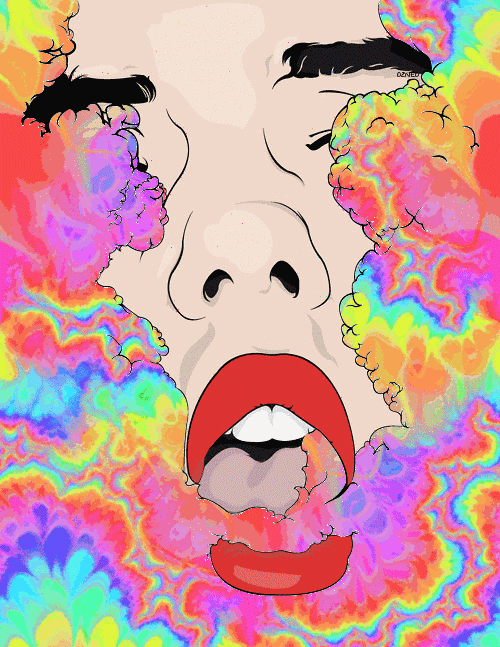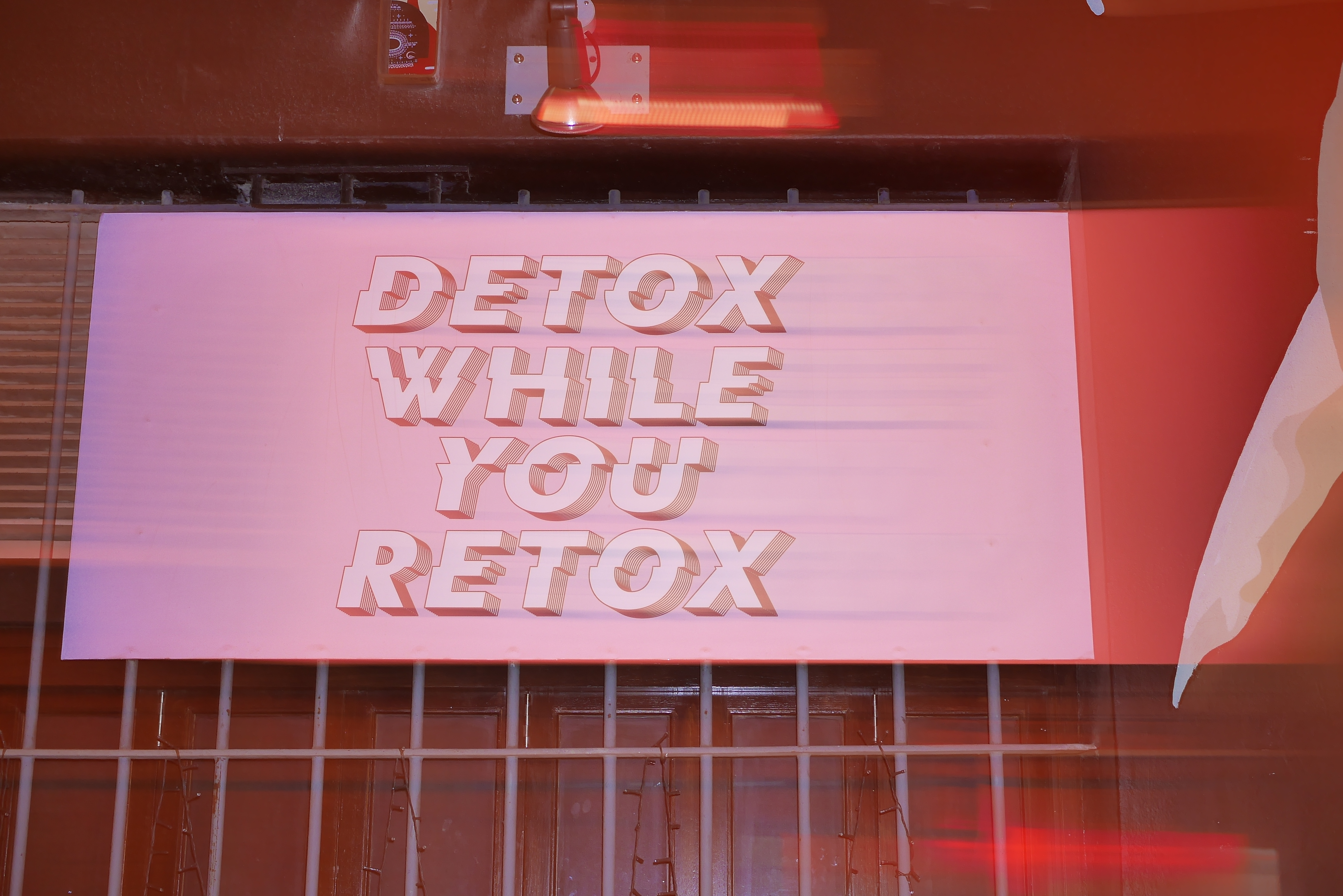Luke Michael | @luke_michael96 – Images | Toh Siang Tan / Pirulaputa
“It hit me instantly. Usually with normal cannabis it would take 10 to 15 minutes before I got stoned, this hit me within seconds, like three bong hits at once.”
Meet 18 year old Jasper*, high school student, Star Wars enthusiast, regular user and one of the many young people experimenting with a new class of drugs.
These novel psychoactive substances (NPS), commonly known as synthetic drugs, have emerged in the last few years, causing headaches for authorities, health professionals and drug takers alike.
Mimicking the effects of more widely known illicit drugs, these substances are hard to detect, constantly changing and potentially extremely dangerous.
If one is so inclined, they can walk into their local sex shop and buy these drugs over the counter as easily as buying Panadol at the chemist.
One of the most notorious substances is synthetic cannabis, which is often marketed as “herbal incense” or “pot-pourri”. It sometimes contains a warning stating it’s “not for human consumption”, but selling for upwards of $100, it is obvious people are intending to somehow take it.
But why do people use it? Dr Monica Barratt, a research fellow with the Drug Policy Modelling Program at the University of NSW, believes there may be a range of reasons. These include a belief these new drugs are legal, wanting to evade a positive drug test, an interest in a potential new effect or because others drugs are simply not available or too expensive.
For Jasper, it was a curiosity to try something new. He was smoking regular cannabis with friends when they convinced him to try the synthetic version.
“It was very similar to normal cannabis but it just kicked in a lot faster. You just feel really stoned for a short while, for about a couple of hours,” he says.
Jasper recalled having no side effects, but not everybody is so lucky.
A Chelsea Heights man recently died consuming synthetic cannabis from a Frankston sex shop. He thought the drug was legal and safe but it was found to be anything but. He is one of a growing number of Australians who are dying from these substances.
Christine Fyffe is the Victorian MP for Evelyn and warns “it is not legal to sell what is loosely called synthetic cannabis to anybody, anywhere”.
The problem she says, is the government can only ban what’s identified, but when this happens manufacturers simply change the product’s composition, effectively staying ahead of the law.
She first became aware of the problem after a man addicted to synthetic cannabis came to see her.
“His whole life was falling apart. He was experiencing mental health issues, he was lethargic and not working and worried about losing his family,” she says.
Some users believe these products are safe because they are sold in a shop, something Dr Barratt quickly dismisses.
“The best evidence we have is that many of these substances are more dangerous than their better known counterparts,” she says.
“Most of them tend to be imported from overseas labs, especially from China, where they have this huge capacity to produce it, and perhaps it’s not the same level of regulation as some of the other countries around the world.”

One person who has been involved with the testing of these substances is Dr Luke Rodda, a forensic toxicologist at the Victorian Institute of Forensic Medicine. He says it is difficult to identify exactly what is in these substances, as each package sold could contain a varying product.
“What’s commercially sold in [a synthetic cannabis] package is green vegetation matter. It could contain one, two, three or a whole range of synthetic cannabinoids. You don’t really know what you’re getting when you purchase these products.”
While some people die from ingesting these substances, others like Jasper, have suffered no adverse side effects. This is due in part to the haphazard way NPS are manufactured, which means there is no consistency regarding the contents and strength of what is sold.
“Mainly with synthetic substances, not only are the drugs sprayed unevenly throughout the matter when they are manufactured, they use a spray bottle or some kind of method to spray the drugs of interest over green vegetation matter,” he says.
While synthetic cannabis has been in the media recently, it’s not the only popular emerging synthetic drug.
25I-NBOMe (25I) is a cheaper and more easily available alternative to LSD, but as with other new substances, it is difficult to ascertain exactly what it contains.
“Structurally it is different to LSD and although it might mimic the effects of LSD it certainly isn’t a homologue or a similar type of compound, however it has produced similar effects,” Dr Rodda says.
“Its toxicity compared to LSD is too hard to really comment on. There has been reports of deaths due to taking these compounds and we don’t normally see this with drugs like LSD, so just going off that you can suggest that they’re not as safe, but there’s no real hard evidence or data for that.”
Jasper has been a regular user of 25I recently and when comparing it to LSD, notes the harshness of the cheaper alternative.
“25I really messed with my stomach. 25I tastes like rust on your mouth and every time I’ve done 25I I’ve thrown up. It’s a lot more harmful to your stomach than LSD,” he says.
After 40 minutes, the effects of the drug begin to consume him.
“It’s like a mixture between a seizure and an orgasm. My body’s kind of vibrating, my head feels like it’s morphing around a little bit, and your head feels like jelly, like it’s being massaged.”
So what can we do to control this emerging drug market?
Decriminalisation and government regulation of the synthetic drug industry is one option. It has been tried in New Zealand, in an attempt to create a more responsible sector and to try and prevent people from taking dangerous substances.
“In New Zealand, legislation was passed which made it possible [to legalise the sale of] what they describe as a low risk psychoactive product if it was tested,” Dr Barratt says.
The banning of animal testing in New Zealand however, has made it difficult to test all the potential effects, putting the system of regulation on hold.
Fyffe on her part, does not believe decriminalisation is a viable option, describing it as “an abrogation of responsibility.”
Greater awareness of the dangers of these substances is perhaps one way to combat the problem.
Jasper, when asked if he would use synthetic cannabis again, says “now that I’ve heard this stuff in the media, probably not”
He was less definitive though when it came to cutting out his use of 25I, a drug which usually makes him black out a few hours after consumption.
“You just blink and pass out in kind of a dreamless sleep,” he says.
If you or someone you know needs to talk to someone about substance abuse, contact the Youth Substance Abuse Service on 1800 014 446.
*Names have been changed

